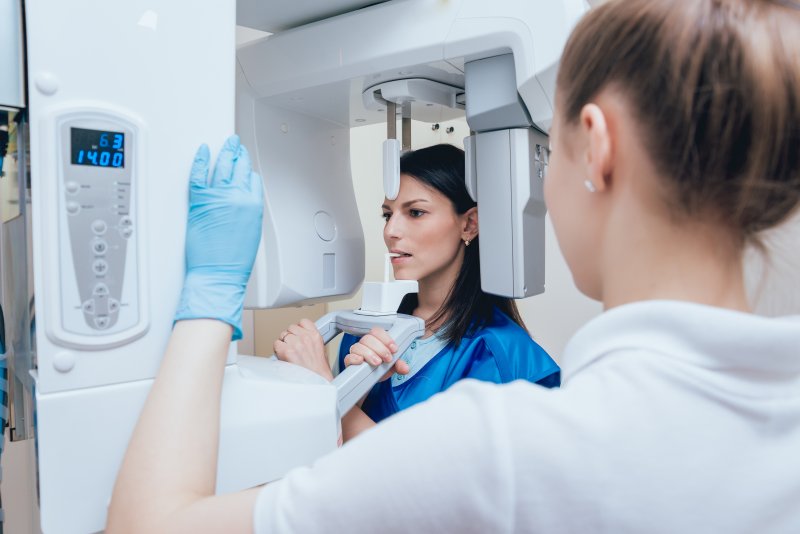
As you consider how you plan to replace your missing teeth, it is important that you spend ample time researching which practice you want to recreate your smile. If dental implants in Midland are the tooth replacement option you choose, knowing which types of equipment a dentist uses can determine whether you want to move forward with treatment. In this article, we will discuss the various technologies that promote greater accuracy, precision, and ensures optimal results.
CT/Cone Beam Scanner
Digital X-rays are a convenient and pivotal part of understanding your oral health, but when it comes to identifying whether you are a qualified candidate for dental implants, your dentist will need to go one step further and use what is known as a CT/Cone Beam Scanner. This device captures a 360-degree scan of your smile, jaw, skull, and facial structures, creating a 3D model in just minutes. The image is then transferred to a computer where your dentist can view various angles as well as your bone and soft tissues. When reviewing the image, they will be able to determine the necessary size and length of the implant to ensure it is placed within a secure and stable foundation while avoiding the potential for nerve damage.
Digital Impression System
When requiring dental impressions for a restoration, dentists previously used cold, messy dental putty. Fortunately, that is no longer the case for many professionals now that the digital impression system is available. Using a handheld, pen-like device, your dentist will quickly scan your mouth, which will create a digital model on a nearby monitor. These images will allow lab technicians to easily create your customized crown, implant bridge, or implant dentures in Midland based on the specifications provided by you and your dentist. You will find that when receiving your implant restoration, it will look and feel just like regular teeth and blend in seamlessly with the rest of your smile.
Computer-Guided Surgery and Implant Placement
Not all dentists use computer-guided implant placement. Many still choose a more conventional method that requires more time and ultimately, less precision. The good news is that by having a dentist who uses this method of advanced technology you can enjoy a more predictable and efficient procedure that minimizes the potential for complications and encourages faster recovery.
With computer-guided implant placement, your dentist will be able to better plan your surgery by using the 3D model captured from the Cone Beam Scanner in combination with an overlay that incorporates the location of each implant. Not only will they be able to manipulate and try various scenarios to ensure correct and precise placement, but this technology also enables your dentist to visualize the result before surgery even begins. This allows them to base the procedure on the results achieved using computer-guided implant placement.
Choosing a dentist who invests their time and money into advanced, modern technology is one of the greatest decisions you can make when pursuing dental implants.
About the Author
Considering dental implants to replace your missing teeth? Dr. Stephen Boyles and his father, Dr. Franklin Boyles, run a family-operated practice that allows them to combine their talents to deliver exceptional dentistry to patients living in Midland and its surrounding communities. Believing advanced technology is one of the best ways to improve a patient’s experience, they use modern equipment to ensure greater precision and accuracy when preparing treatment plans for individuals undergoing root canals or even dental implant placement. To find out which technologies we use, visit our website or call (432) 685-7011.
